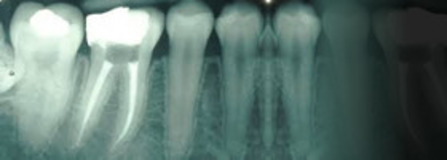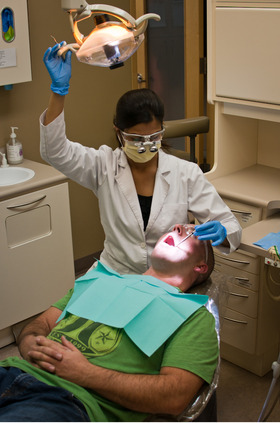
Root Canal Treatment, NW Calgary
Everyone at some point in their lives will probably have to have a root canal treatment. Please read the information below to find out more about the procedure.

Root canal treatment - NW Calgary
When the nerve of your tooth becomes infected, a successful root canal treatment lets you keep the tooth, rather than having to pull it out. Keeping your tooth helps to prevent bone loss, as well as your other teeth from drifting out of line, causing jaw problems. Saving a natural tooth avoids having to replace it with an artificial tooth.
What is root canal treatment? Root canal treatment, also known as root canal therapy or endodontic treatment, is the process of removing infected, injured or dead pulp from your tooth. The space inside the hard layer of each tooth is called the root canal system. When bacteria (germs) enter your tooth through deep cavities or cracks, you tooth can become abscessed. An abscessed tooth is a tooth with an infection in the pulp. If pulp becomes infected, it needs to be removed. An abscessed tooth may cause pain, swelling and/or headache, or it may be completely asymptomatic. If left untreated, an abscessed tooth can cause serious health problems.
DID YOU KNOW? The word “endodontics” means endo=inside or within and dontics=related to teeth.
Who does this procedure?Your dentist may do the root canal treatment or refer you to an endodontist (for complicated cases such as root canal re-treatments, a tooth with curved/twisted roots or canals otherwise difficult to access, or a tooth with calcified canals, etc.). An endodontist is a dentist who specialises in dentistry concerned with the treatment of the dental pulp or nerve of the tooth (i.e. the inside of the tooth).
Tooth restoration after root canal treatment: After a root canal treatment, your tooth has to be restored (fixed) to look, feel and work as much like a natural tooth as possible. If an endodontist performed your root canal treatment, he or she will fill the opening of the tooth with a temporary filling and send you back to your dentist for final tooth restoration. Your dentist will use a permanent filling, and in most cases a crown, to restore your tooth. The choice of restoration will depend on the strength of the part of the tooth’s structure that is left. A back tooth will likely need a crown because chewing puts a great deal of force on back teeth. If there is not enough of the tooth left, posts may be used to help support the crown.
What else should I know? Root canal treatment may be done in one or two appointments. After root canal treatment, your tooth may be tender for the first week or two. Bad pain or swelling are not common; if this happens, call your dentist or endodontist. You can still get a cavity or gum disease after a root canal. Root canal treatment does not protect your tooth from other types of damage. With proper care and regular dental visits, the tooth could last as long as your other teeth. There are some cases where everything possible has been done to save a tooth and still the tooth must be extracted (pulled).